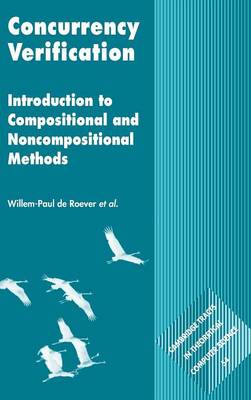Cambridge Tracts in Theoretical Computer Science
2 total works
The goal of this book is to provide a comprehensive and systematic introduction to the important and highly applicable method of data refinement and the simulation methods used for proving its correctness. The authors concentrate in the first part on the general principles needed to prove data refinement correct. They begin with an explanation of the fundamental notions, showing that data refinement proofs reduce to proving simulation. The book's second part contains a detailed survey of important methods in this field, which are carefully analysed, and shown to be either incomplete, with counterexamples to their application, or to be always applicable whenever data refinement holds. This is shown by proving, for the first time, that all these methods can be described and analysed in terms of two simple notions: forward and backward simulation. The book is self-contained, going from advanced undergraduate level and taking the reader to the state of the art in methods for proving simulation.
Concurrency Verification
by Willem-Paul de Roever, Frank de Boer, Ulrich Hanneman, Jozef Hooman, Yassine Lakhnech, Mannes Poel, and Job Zwiers
Published 26 November 2001
This is a systematic and comprehensive introduction both to compositional proof methods for the state-based verification of concurrent programs, such as the assumption-commitment and rely-guarantee paradigms, and to noncompositional methods, whose presentation culminates in an exposition of the communication-closed-layers (CCL) paradigm for verifying network protocols. Compositional concurrency verification methods reduce the verification of a concurrent program to the independent verification of its parts. If those parts are tightly coupled, one additionally needs verification methods based on the causal order between events. These are presented using CCL. The semantic approach followed here allows a systematic presentation of all these concepts in a unified framework which highlights essential concepts. This 2001 book is self-contained, guiding the reader from advanced undergraduate level. Every method is illustrated by examples, and a picture gallery of some of the subject's key figures complements the text.

